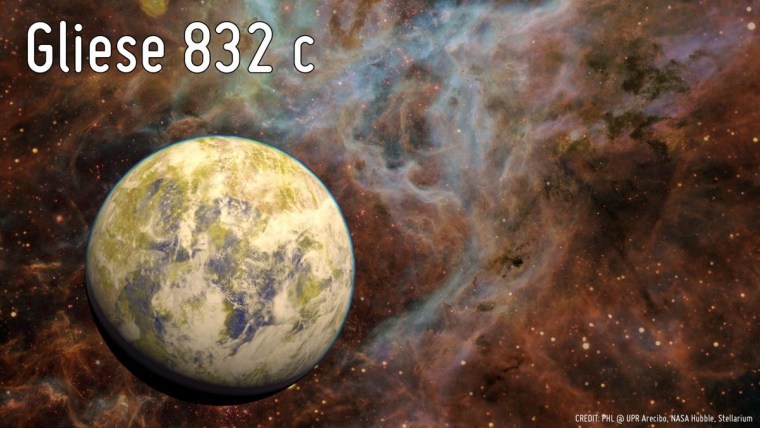A newfound alien world might be able to support life — and it's just a stone's throw from Earth in the cosmic scheme of things.
An international team of astronomers has discovered an exoplanet in the star Gliese 832's "habitable zone" — the just-right range of distances that could allow liquid water to exist on a world's surface. The planet, known as Gliese 832c, lies just 16 light-years from Earth. (For perspective, the Milky Way galaxy is about 100,000 light-years wide; the closest star to Earth, Proxima Centauri, is 4.2 light-years away.)
Sign up for top Science news delivered direct to your inbox
Gliese 832c is a "super-Earth" at least five times as massive as our planet, and it zips around its host star every 36 days. But that host star is a red dwarf that's much dimmer and cooler than our sun, so Gliese 832c receives about as much stellar energy as Earth does, despite orbiting much closer to its parent, researchers said. [ 10 Exoplanets That Could Host Alien Life ]

Indeed, Gliese 832c is one of the three most Earth-like exoplanets yet discovered according to a commonly used metric, said Abel Mendez Torres, director of the Planetary Habitability Laboratory at the University of Puerto Rico at Arecibo.
"The Earth Similarity Index (ESI) of Gliese 832c (ESI = 0.81) is comparable to Gliese 667Cc (ESI = 0.84) and Kepler-62e (ESI = 0.83)," Mendez wrote in a blog post today (June 25). (A perfect "Earth twin" would have an ESI of 1.)
"This makes Gliese 832c one of the top three most Earth-like planets according to the ESI (i.e., with respect to Earth's stellar flux and mass) and the closest one to Earth of all three — a prime object for follow-up observations," he added.
A team led by Robert Wittenmyer, of the University of New South Wales in Australia, discovered Gliese 832c by noticing the tiny wobbles the planet's gravity induces in the motion of its host star.
— Mike Wall, SpaceDotCom
This is a condensed version of a report from space.com. Read the full report. Follow Mike Wall on Twitter @michaeldwall and Google+. Follow us @Spacedotcom, Facebook or Google+.